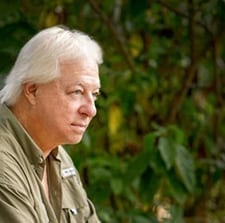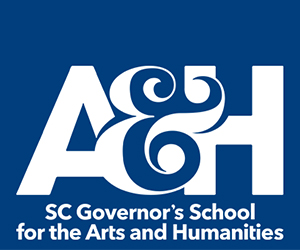Shrimp, Collards, & Grits
January 20, 2017By Tom Poland
As Southern As It Gets
Back in August, Patricia Branning emailed me. She and a woman who represents authors had been talking and my name came up. Pat Branning is the force behind a super-successful cookbook series, Shrimp, Collards, & Grits, that has sold over 70,000 copies. She and her designer-photographer son, Andrew, create cookbooks that are works of art, each being filled with stunning art and photography. They serve a visual feast as delicious as the Southern recipes in them, and they’re wildly popular. Based on the success of her cookbooks, Pat decided to launch a true Southern-voiced magazine, Shrimp, Collards, & Grits Lifestyle, and she asked me to serve as its editor.
 Like me, Pat is a Georgia Bulldog, a journalism graduate. If you met her, you’d feel right at home. Says Pat, “I’m a Georgia Bulldog through and through—the University of Georgia is where I learned I loved Southern. From there I went to Atlanta to serve as Women’s Editor for WSB radio, the clear channel Voice of the South! Talk about southern, I now know what it means to make a mess o’ collard greens and even understand how far is “over yonder.” Only a true southerner knows that!”
Like me, Pat is a Georgia Bulldog, a journalism graduate. If you met her, you’d feel right at home. Says Pat, “I’m a Georgia Bulldog through and through—the University of Georgia is where I learned I loved Southern. From there I went to Atlanta to serve as Women’s Editor for WSB radio, the clear channel Voice of the South! Talk about southern, I now know what it means to make a mess o’ collard greens and even understand how far is “over yonder.” Only a true southerner knows that!”
The past six months I’ve had the privilege of working with Pat, Andrew, talented writers, photographers, artists, and chefs. Although I’m in the South Carolina Midlands, much of my summer, fall, and winter have felt as if I were down along the Georgia and South Carolina coast. Here’s a glimpse into the inaugural issue of SCGL.
Brian Brown, an architectural and documentary photographer, historian, and author from Fitzgerald, Georgia, creates websites, “Vanishing Georgia,” that document what Georgia is losing, region by region. His photo essay on “Vanishing Coastal Georgia” covers places a bit off the beaten path such as the Cockspur Island Lighthouse, Georgia’s smallest lighthouse, and Hog Hammock, the heart of Sapelo Island’s Gullah community, and perhaps the most unique settlement in all of Georgia.
Mary Alice Monroe, a New York Times best-selling author, found her true calling in environmental fiction when she moved to coastal South Carolina. The beauty and fragility of her new home captivated her and her experiences living in the midst of quickly changing habitat gave her a strong focus for her novels. She writes of how visitors to the Lowcountry love its coastline and cuisine but that what they perceive is not always what to believe. Behind this idyllic scene is a landscape and lifestyle in jeopardy. The shrimping industry is in peril as are coastal species like the loggerhead sea turtle and dolphins. She writes about how we can all pitch in and make things better for all.
Third-generation Beaufort native Gibbes McDowell has explored every swamp, hammock, and briar patch of his beloved Lowcountry seeking wild game and even wilder stories for fifty years. His “Fish Camp Memories” gives us an inside look at rustic camps that began life as simple plywood shacks, upgrades of earlier temporary tent camps. The passage of decades has seen these camps morph into hallowed ground, a place where only good times are invited. Life’s problems and grinding responsibilities are left behind until the fated return to the world. It’s a private, cherished tradition of going down river and “if you have to ask what river, you are clearly outside the loop.”
Chef Johnathan Barrett writes about a memorable birthday dinner at Ossabaw Island, “a verdantly colored paradise, particularly as spring comes into full season. From the foliage of the towering pines and outstretched live oaks to the slender reeds of the spartina grass and the rustling fans of the palmettos, the island is a hundred shades of green.” Johnathan was the designated chef there for a palatial meal, Ossabaw Buco, but had to prepare some of it in advance and then make the crossing to boat-accessible Ossabaw.
Jonathan Haupt, former director of the University of South Carolina Press, interviews author Cassandra King, the late Pat Conroy’s wife, about the newly established Pat Conroy Literary Center, a living legacy to Pat that will be a haven for writers, offering educational and culturally enriching programs across genres and arts. Like Pat himself, the Center will make its home in Beaufort but have a presence resonating across the South. Cassandra talks as well about Lowcountry Heart, Pat’s posthumously published collection of nonfiction.
Kristen Mattson writes about how oysters bless the maritime forest with unique spring flowers. Yes, you read that right. Most of the soil throughout the southeastern Coastal Plain is acidic, but in select locations along our coast, American Indians piled spent oyster shells in the forest and calcium leached into the soil. That set the stage for rare and unique spring-flowering plants to take hold. We don’t associate oysters with beautiful wildflowers but there’s a connection. Oysters bless us in surprising ways.
My contribution to the inaugural issue is “Memories of Bonneau,” my recollection of what it was like to attend a deer hunt in a majestic setting along the Cooper River after a regal night of steaks, cigars, and cocktails. “Rugged opulence” came to mind in this place where you could open any cabinet in the house and find it full of all kinds of brands of liquor, cigarettes, and cigars. One thing nagged at me all night though. Could I kill a deer come dawn?
Bill “Big Sky” Fitzpatrick writes of the Old St. Andrews Episcopal Church, a special church Union soldiers spared from the torch, a church that today is a national treasure.
Former colleague, friend, and author, Ben Möise, writes about calling up a gobbler down in the Francis Marion Forest. In “Love Song in the Spring” he recounts how he called up a wily old turkey that looked as big as an elephant and had a visage as fierce as a lion. Other features in the inaugural issue include restaurant reviews, Charleston’s changing art scene, a book review, spring in Savannah and a walkabout her lovely squares, and more such as fabulous art and photographs from Robert Clark.
They say it’s not work if you love what you do and I assure you serving as editor for this inaugural issue is a joy. If any of you like what you read here and want to subscribe to SCGL, shoot me an email.
Visit Tom Poland’s website at www.tompoland.net
Email Tom about most anything. [email protected]
Tom Poland is the author of twelve books and more than 1,000 magazine features. A Southern writer, his work has appeared in magazines throughout the South. The University of South Carolina Press released his book, Georgialina, A Southland As We Knew It, in November 2015 and his and Robert Clark’s Reflections Of South Carolina, Vol. II in 2014. The History Press of Charleston published Classic Carolina Road Trips From Columbia in 2014. He writes a weekly column for newspapers in Georgia and South Carolina about the South, its people, traditions, lifestyle, and changing culture and speaks often to groups across South Carolina and Georgia, “Georgialina.”















